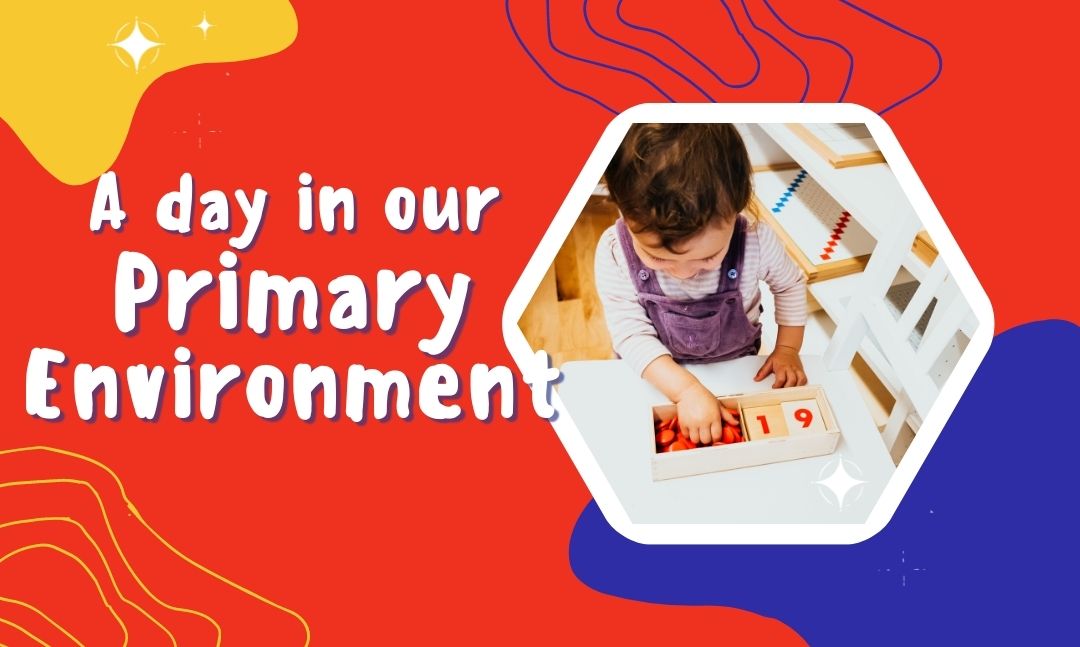When people envision a Montessori school, many of them immediately think of a primary environment. They are flooded with images of children in smocks and classroom shoes navigating around child-sized wooden chairs and tables. You might think of traditional puzzle maps, counting beads or other quintessential Montessori materials. And, you’d be right to think this way! In America, the Montessori primary environment is the purest example of the Montessori Method in practice.
The breakdown of the primary environment
At Maria Montessori School, students progress into our primary environment after spending 18 months in our toddler classroom. The primary classroom is filled with students between the ages of 3 and 6 years old, the second age group that falls into the infancy category within Maria Montessori’s planes of development. This time period is spent developing biological independence. As you would expect, students in our primary environment are building a firmer grasp of their own independence, honing skills and celebrating their newfound freedoms and accomplishments.
Students in our primary environment are also still in the absorbent mind phase of learning. Dr. Montessori believed that children from age birth to 6 are spending significant amounts of time simply observing and categorizing the world around them. As they take in information, they try to sort and process it, which can create those cute slip ups or funny moments you experience when you interact with a young child.
What happens in our primary classroom
If you were to observe our primary environment, you would start to see many of the trademark Montessori practices coming to the forefront. While all Montessori environments encourage students to self-manage their classroom care, you’ll really start to see students engage in this process during their time in the primary environment. You’ll frequently watch them clean up tables and dishes and care for their materials, often without a nudge from the guides.
They move freely throughout the classroom and engage with various materials, often breaking up into small groups to teach and learn from each other. All of the classroom materials will be sized for the child, and they should be able to access materials freely from open, preferably wooden, shelves. The materials should fall into similar categories as those found in the toddler environment, including language arts, sensorial, math, cultural studies and practical life.
One of the main draws to the Montessori method for modern families is the emphasis on practical skill development. During their time in the primary environment, children as young as three years old learn how to do skills that many American parents would still do for them. This includes things like brushing their hair, tying their shoes, folding clothes and completing basic kitchen tasks. By introducing these skills to young children, many families learn that even the littlest kids are capable of more than we give them credit for. Relinquishing some control of these basic care tasks to toddlers and young children can help provide a sense of independence, curb behavioral challenges and strengthen parent-child relationships.
When you visit Maria Montessori School, ask to visit our primary environment! By observing this classroom, you’ll see many traditional Montessori practices and will get a great sense for how the method operates in real life!

